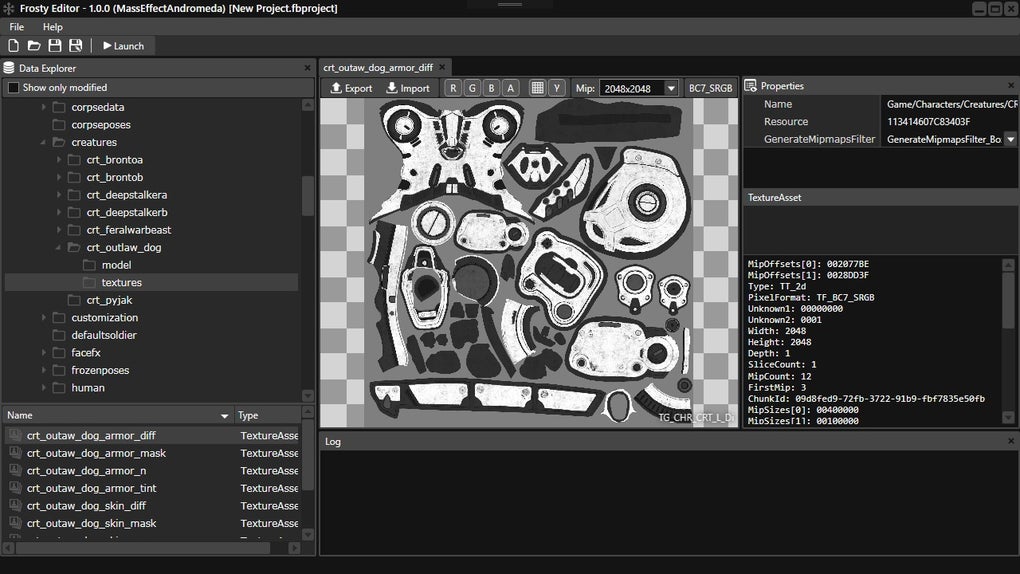
- FROSTY MOD MANAGER CONFLICT WINDOW MOD
- FROSTY MOD MANAGER CONFLICT WINDOW PATCH
- FROSTY MOD MANAGER CONFLICT WINDOW MODS
FROSTY MOD MANAGER CONFLICT WINDOW MODS
The list of mods in the Navigation Tree changes color (text and background) based on conflict status of each, and the results are shown in the View Tab which also changes color (text and background).
FROSTY MOD MANAGER CONFLICT WINDOW MOD
When you apply a filter, the loaded mod data in 圎dit is parsed and analyzed via a complex algorithm (described below) to detect all conflicts and overrides. The application of Filters is the primary means of conflict detection for 圎dit. Previous Section 5.3 - Applying The Conflict Filter

FROSTY MOD MANAGER CONFLICT WINDOW PATCH
That's what creating Patch Plugins is all about, and the process starts with applying a Filter. In all this it's important to say, it's perfectly possible for 10 modules to override the same record without a single conflict, as long as the last loaded version of that record includes all the changes from the 10 other modules. The screenshot below illustrates the differences as seen in 圎dit: Conflict Losers will show up with a red background, red text. Thus the last loaded mod is the, "Conflict Winner" while the first mod, whose changes were overridden, is the, "Conflict Loser". The conflict arises when the two overrides change different aspects of the same record, so that when the mods are loaded, the last-mod loaded overrides the changes of the first-mod. To get a conflict you need to have the same FormID defined in at least 3 modules, a master, and 2 overrides. In most cases you don't need to do anything with Overrides. Overrides show up in 圎dit with a Yellow background color and Green text color. Overrides are not conflicting in any way. If for example, ModA changes the level cap to 40 from the default, this over-rides the level 20 cap in the Fallout3 master files and is a normal. There are mods which override changes from a master file, such as changing the level cap. There is a huge difference between a "conflict" and an "override". We discuss the process in depth below.ĥ.2 - Differences between Conflicts and Overrides These are the conflicts that we need to detect and resolve, while leaving the bulk of the good/intended conflicts and overrides left un-changed. In the worst case scenario the game will crash more often, sometimes constantly. Some conflicts are very apparent in-game such as in the example above, while others are hidden and only reveal themselves via crashes or when mods don't work right. The picture below is a poster-child example of how mods can fight over the same space and result in a bad change to the game: Negative or bad conflicts can also occur when mods make radical changes to the same world cell as the example below shows, while others can result in missing references, features in-game and even game crashes. This is a bad conflict, and overcoming them is the focus of this chapter. If ModA loads before ModB, the changes made to the lantern by ModA get over-written by ModB (which still thinks the lantern has a Neutral color). ModB changes the radius of the same lantern by 50%, making it brighter. ModA changes the color of a standard lantern from a Neutral color to a Warmer color. For example, two mods are added to the load order ModA and ModB. The name of the game with Conflicts Resolution is load order, as the game will count the last record loaded as the winner of any conflict between files.

That is why our goal is to detect conflicts, determine their nature and resolve the bad conflicts while leaving good changes in place. Conflicts and Overrides are not always bad, and in fact the entire idea of "modding" is to make changes to the game that replace (and thus create a conflict or override for) the original records that came with Fallout3. One of the primary roles of 圎dit is for conflict detection and resolution, so that multiple mods that modify the same records can work together successfully.

圎dit What's New and Version Info 圎dit Conflict Detection and Resolution Contents. Cheat Sheets and Quick Reference Charts 13.


 0 kommentar(er)
0 kommentar(er)
